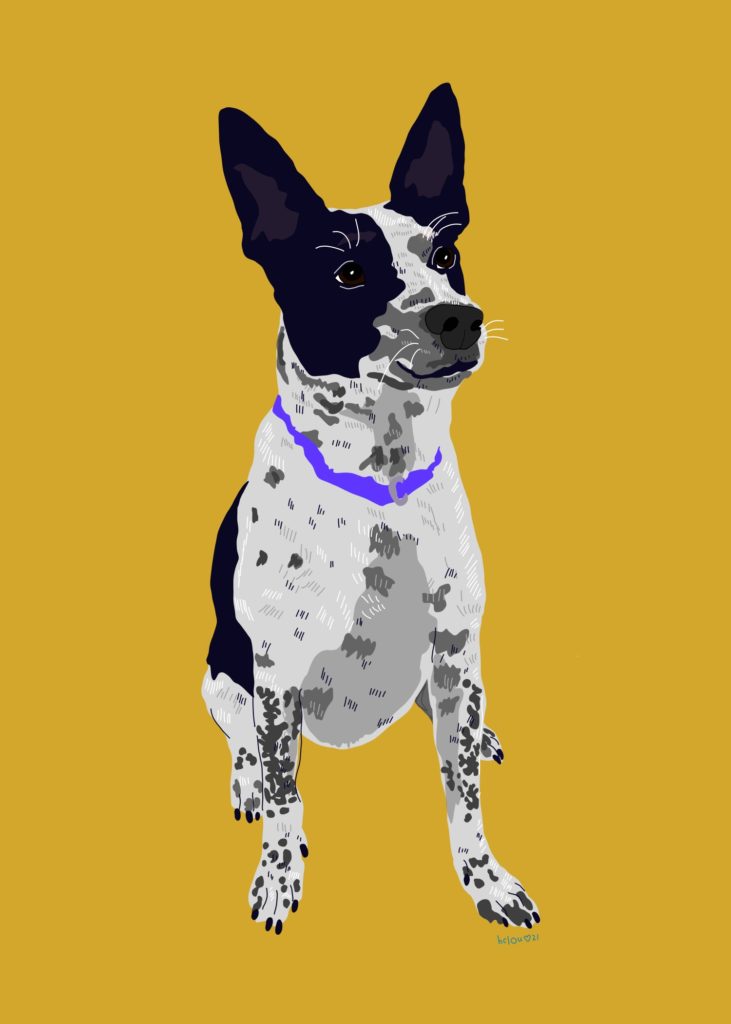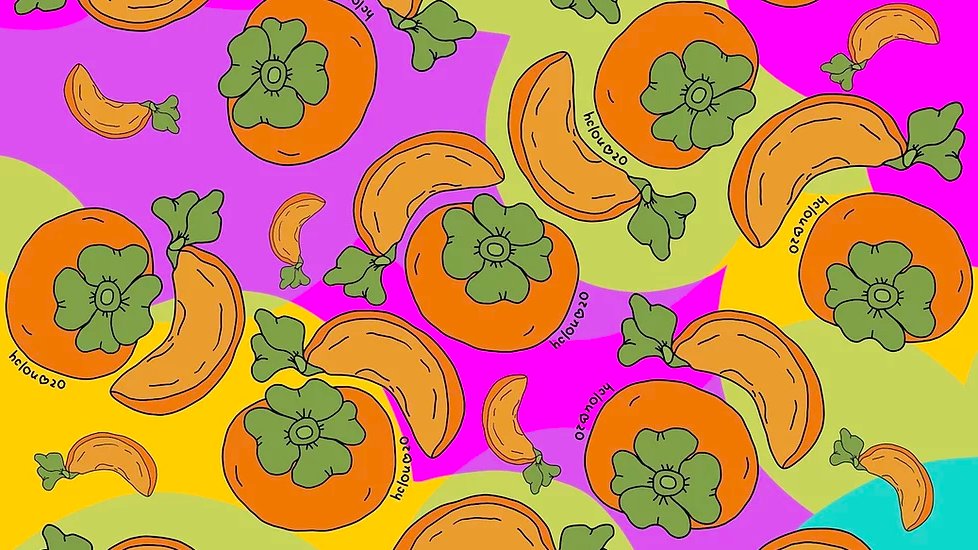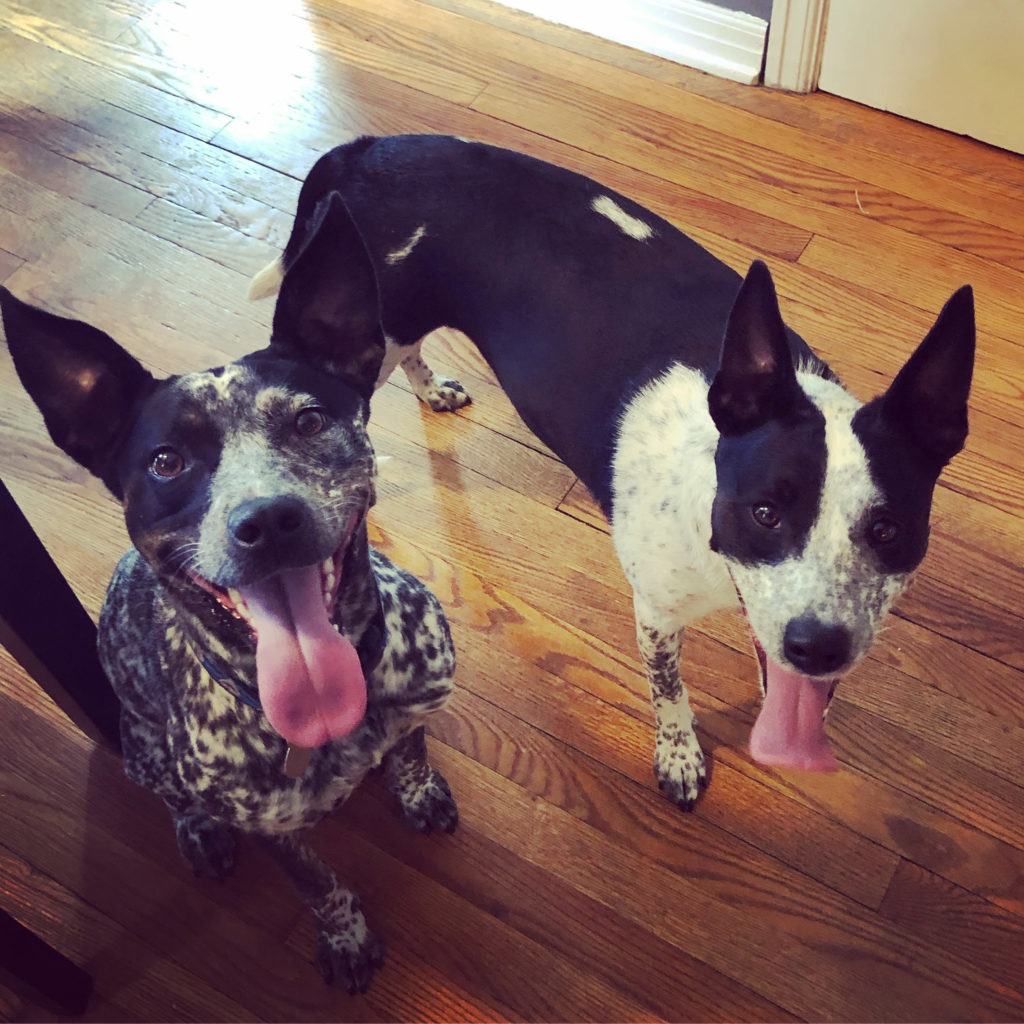Imagine futures with heather c. lou
Saymoukda Duangphouxay Vongsay tried — and failed — to buy art from heather c. lou. She was strolling through Appleby Hall at the University of Minnesota, where both women worked at the time, exploring an exhibition of lou’s art. “I was like, ‘Wow, I really want one of these,’” Vongsay said. But that art wasn’t for sale. “What can be for sale?” she countered. “I’ll make you something,” lou said. Days later, she showed up in Vongsay’s office with a watercolor painting of yam, garlic, chard, carrots, asparagus, and radish — free of charge.
From all the accounts I’ve heard, this is typical heather lou. She loves fruit and vegetables. She thinks art should be accessible. She moved to the Twin Cities in 2016, and she loves dogs. Recently, a friend told me about attending an art sale where lou was tabling: A person walked in holding a puppy, and lou immediately bounded toward them, ditching potential customers. “Take whatever art you want,” she called.
I experienced lou’s love for animals firsthand last spring, when I commissioned an illustration of my cattle dog, Chaka. Lou has created around 300 digital pet portraits to date, including illustrations of her dogs Loon and Sprout. She also makes “fuck white supremacy” zines, COVID-themed block prints, and Emergent Strategy-inspired postcards. Joy runs through every piece.

*
“I see two cattle dogs staring at me,” lou called from the kitchen. She opened the glass door, and Chaka and Loon jostled each other into the house. They trotted past us, tails wagging, and lou sat back down. After eating breakfast, we started to talk art.
“Some of my earliest memories are from sitting on a little foldout table with perforated paper, and just drawing for hours and hours and hours,” lou says. She grew up in southern California, mostly raised by her Taishanese grandparents. While majoring in public relations in college, she also found ways to take arts and humanities classes. Around 2012, she started to share her art publicly.
Since moving to the Twin Cities from Oakland, lou has grown rich in chosen family. She collaborates with Powderhorn’s own Pickle Witch in their joint BIPOC-artists platform Support Local Hustle. For her, art is all about community: “I have never created art to make money,” she says. “It’s about the way the art makes people feel. It’s about imagining radical shit and having fun with it.”
*
The first time I encountered lou’s art was at Dulceria Bakery, the tiny pink-and-orange refugio in South Minneapolis. I lived nearby and often picked up cajeta conchas. When I heard Dulceria was closing in Feb. 2020, I lined up behind dozens of other fans for a goodbye party. By the time I got to the register, very few pastries remained in the case, so instead, I bought a postcard-sized print of an empanada. A banner across the top read, “delicioso!” The signature read, “hclou♡20.”
“The first time I met hc, I felt I ran into a kindred soul,” Dulce Monterrubio, owner of the late Dulceria Bakery, tells me. “There was this energy of honesty, but also of softness and tenderness for the people around us — of accountability and fun.” They met through the Pickle Witch, selling wares at an early Support Local Hustle event.
Lou and Monterrubio had a lot in common. As disabled women of color working in higher education, they both struggled against stereotypes and white supremacist systems (both have since left the industry). They both lived in South Minneapolis and loved food. “Food is resistance,” Monterrubio says. “Food is identity; food is connection; food is community.” lou practices that same belief; at the beginning of COVID, she says, “I was literally making mochi nonstop.” Not mochi ice cream, she stresses. “I’m talking straight-up, real mochi of all different flavors. I was dropping it off to people. I was doing porch pickups. Like, ‘Who needs mochi? Just come get it.’”
After Monterrubio opened her brick-and-mortar shop in 2018, lou would hang out and doodle conchas. And when Monterrubio announced her bakery would close, the two agreed to sell Dulceria-themed prints to raise money for employees’ severance. lou illustrated a rainbow concha, a gorgeous fruit pie, and other pasteles against fuschia or orange backgrounds. “I was very honored and moved, because she captured the essence of Dulceria,” Monterrubio says. “It was colorful, it was bright. It was about creating those memories. And those prints sold really fast.”
*
When lou was little, a giant persimmon tree shaded her grandparents’ backyard. The fruit would drop every fall, and lou’s grandmother would send her out to fill five-gallon buckets. “She put them in her trunk,” lou says. “There’d be plastic bags of these beautifully golden orange persimmons. And any time she would see someone, she’d be like, ‘Oh, you want some fruit?’” Lou hunches back into her chair, imitating her grandmother. “She would see a friend in the grocery store buying persimmons, and she’d be like, ‘Don’t buy them here. I have some.’ She’s kind of the original, right? Providing for community.”
Not every childhood moment was that pure. lou left home at 17 and is currently out of touch with her biological family. But she talks at length about her grandmother’s joy, stubbornness, and humor. “A lot of my work is a calling to my grandmother and thinking about memories,” she says. Those persimmon prints and fanny packs? Completely inspired by the giant tree. “I have moments where I still, on Google Earth or whatever, look up her old house and try to see if the persimmon tree still stands,” lou says. “And you know what? It still does.”

*
lou lives in St. Paul now — like many others, she got priced out of South Minneapolis. But her home on the Eastside is less than a mile away from Vongsay’s, and Vongsay says lou rescued her after a tough childbirth. “She was always there with food and friendship,” Vongsay says. “She’s a multiplier — that’s what I love about her. We need people who operate from abundance, who believe there can always be more. And if there isn’t more, we go ask for more, or we go find more.”
Even faith in “more” can’t erase the weight of the world. “The past year and a half, with the pandemic; with George Floyd’s murder; with the murder of Dolal Idd; with Daunte Wright’s murder; with Breonna Taylor’s murder being explained away; there’s so many transgressions and violations,” lou says. “Six folks were murdered in Atlanta, and Asian women were murdered, and families [are] being separated at the border, and Native and Indigenous folks [have been] saying again and again, ‘Stop Line 3. Stop DAPL.’ We can continue to name all of these transgressions.”
“And for me,” lou continues, “some of this work around ancestors is about imagining futures. Outside of systems: How do we use art to imagine [and] find slivers of joy? Some of the work that I’ve been doing has been accessing memories of my grandmother’s resistance, and how she taught me. As much as there’s intergenerational violence and harm and pain that may have been passed on, there’s also these really rad moments that were joyful. So a lot of my art has been trying to address and even interrogate that. Even if it’s dog portraits.” She laughs. Behind her, Loon and Chaka are resting on the rug.

The Creative Economy Fellowship, the next iteration of the 20/20 Fellowship, is now open for applications! See more and apply by September 10, 2021 – https://springboardforthearts.org/jobs-opportunities/creative-economy-fellowship/

It’s nice to see young artists do what I taught in public schools beginning in 1964.
Keep on making beauty in our beautiful world as art is forever beautiful, true & good.